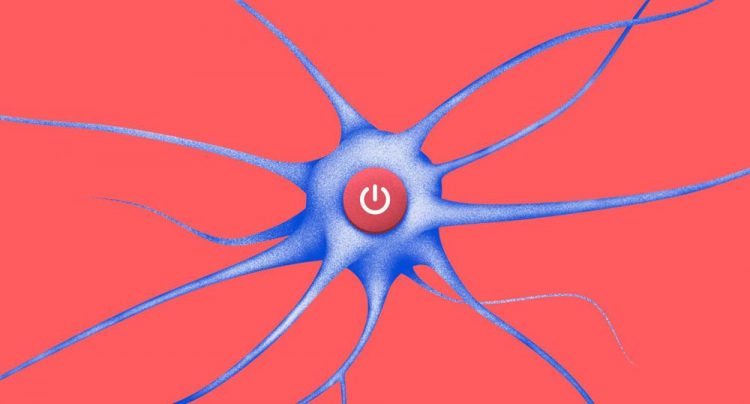New proton 'starter' for optogenetics

Researchers described a new optogenetic tool -- a protein called NsXeR, which belongs to the class of xenorhodopsins. When exposed to light, it can activate individual neurons, making them send set signals to the nervous system. Apart from applications in nervous system research, xenorhodopsins may also take over muscle cell control. Credit: MIPT Press Office
Why it matters
Optogenetics is a new technique that uses light to control neurons or muscle cells in living tissue. It has found wide application in nervous system studies. Optogenetic manipulations are so precise that they make it possible to control individual neurons by switching certain information transfer pathways on or off. Similar methods are also used to partially reverse eyesight or hearing loss as well as to control muscle contractions.
The main tools of optogenetics are light-sensitive proteins that are intentionally inserted into particular cells. After the insertion, the protein becomes attached to the cell surface and moves ions across the membrane upon exposure to light.
Thus, in a modified neuron cell, a correctly chosen light impulse may activate a neural signal or, on the contrary, suppress all the signals, depending on which protein is used. By activating signals from individual neurons, it is possible to imitate the functioning of certain brain regions — a technique that modulates the behavior of the organism under study. If such proteins are inserted in muscle cells, an external signal can tense or relax them.
The authors of the paper, which was published in Science Advances, described a new optogenetic tool — a protein called NsXeR, which belongs to the class of xenorhodopsins. When exposed to light, it can activate individual neurons, making them send set signals to the nervous system.
Apart from applications in nervous system research, xenorhodopsins may also take over muscle cell control. To activate these cells, it is preferable that calcium ion transport be blocked, because alterations in the ion concentration can affect them. When using proteins that transport various positive ions (such as calcium) nonselectively, undesirable side effects are likely to appear.
The discovered protein helps to bypass uncontrolled calcium translocation: It is selective and pumps nothing but the protons into the cell. Because of this selectivity, it has a considerable advantage over its chief rival channelrhodopsin, which is being extensively used in research but does not discriminate between positively charged ions.
What is more, xenorhodopsin acts as a reliable pump, transporting protons both into and out of the cell regardless of their concentration, whereas channelrhodopsin only allows ions to move from an area of higher concentration to an area of lower concentration.
In both cases a positive charge inflow into an excitable cell reduces the tension between its inner and outer membrane surfaces. Such membrane depolarization generates a nerve or muscle impulse. The ability to induce such an impulse by pumping nothing but protons will reduce possible side effects during research.
“So far we have all the necessary data on how the protein functions. This will become the basis of our further research aimed at optimizing and adjusting the protein parameters to the needs of optogenetics,” says Vitaly Shevchenko, the lead author of the paper and a staff member at the MIPT Laboratory for Advanced Studies of Membrane Proteins.
###
This research was supported ERA.Net RUS PLUS and the Ministry of Education and Science of the Russian Federation (project ID 323, RFMEFI58715X0011).
Media Contact
All latest news from the category: Life Sciences and Chemistry
Articles and reports from the Life Sciences and chemistry area deal with applied and basic research into modern biology, chemistry and human medicine.
Valuable information can be found on a range of life sciences fields including bacteriology, biochemistry, bionics, bioinformatics, biophysics, biotechnology, genetics, geobotany, human biology, marine biology, microbiology, molecular biology, cellular biology, zoology, bioinorganic chemistry, microchemistry and environmental chemistry.
Newest articles

NASA: Mystery of life’s handedness deepens
The mystery of why life uses molecules with specific orientations has deepened with a NASA-funded discovery that RNA — a key molecule thought to have potentially held the instructions for…

What are the effects of historic lithium mining on water quality?
Study reveals low levels of common contaminants but high levels of other elements in waters associated with an abandoned lithium mine. Lithium ore and mining waste from a historic lithium…

Quantum-inspired design boosts efficiency of heat-to-electricity conversion
Rice engineers take unconventional route to improving thermophotovoltaic systems. Researchers at Rice University have found a new way to improve a key element of thermophotovoltaic (TPV) systems, which convert heat…



